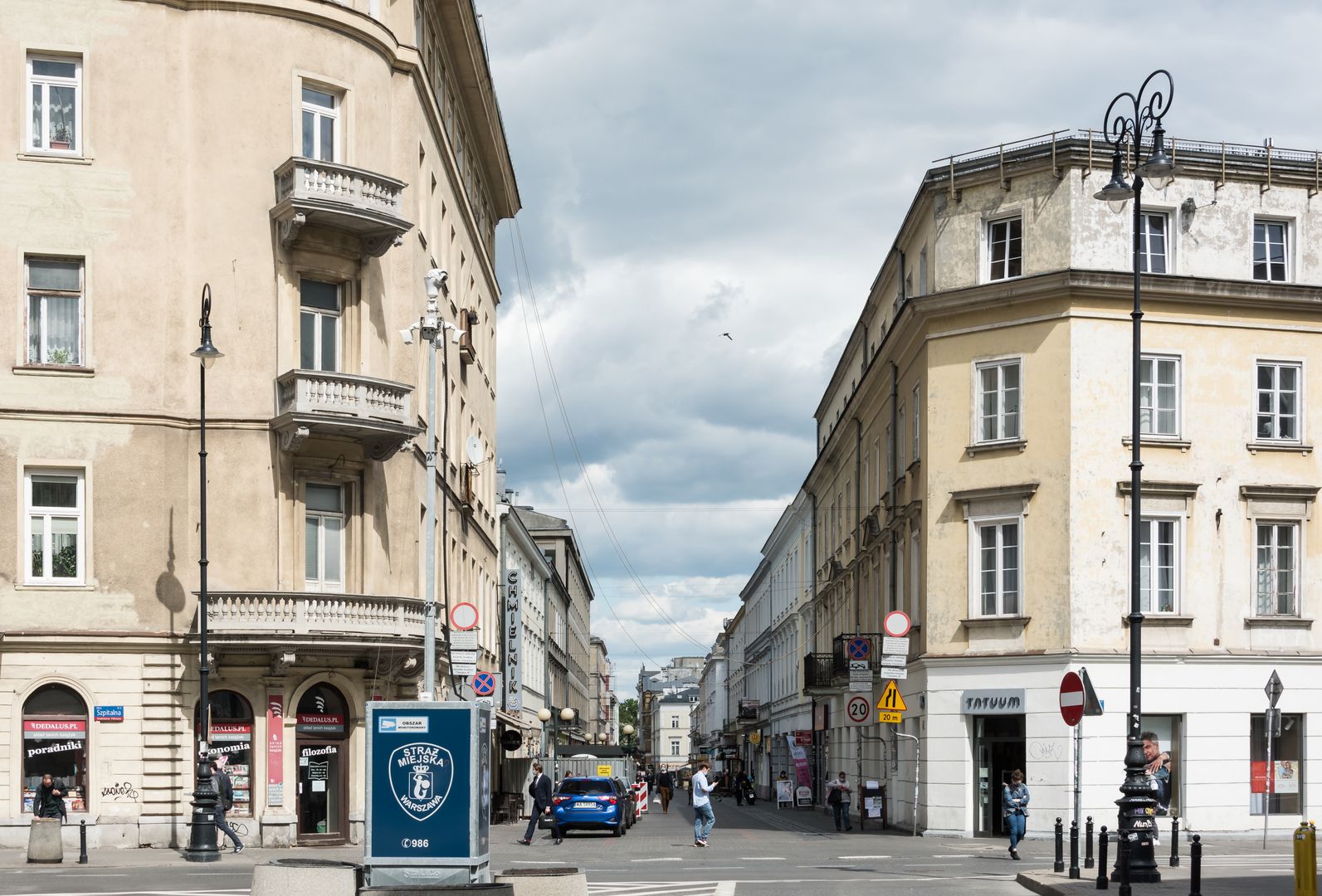Chmielna Street in Warsaw
6.71

Overview
Chmielna Street, located in Warsaw, runs through the Śródmieście and Wola districts and consists of two sections separated by the construction of the Palace of Culture and Science. The street's history dates back to the era of the Polish–Lithuanian Commonwealth, when it began as a field path between the lands of the Augustinians and the Missionary priests. It was officially named in 1770 after the Chmielnik area, which indicates the historical presence of hop gardens. During the 18th and 19th centuries, Chmielna began to develop architecturally, with the first brick houses and tenements appearing in the area in the second half of the 19th century, including works by renowned architects such as Henryk Marconi. During the partitions, the street gained importance, and the development of cultural infrastructure was noticeable—by 1914, cafes, restaurants, and hotels had been established. The interwar period was a time of intense cultural and social development, and Chmielna became a center for clothing trade and entertainment, with popular cinemas and restaurants. After World War II, the street was destroyed, and after 1946, reconstruction began, which, however, involved the demolition of many historic buildings. In the 1990s, the street gained a new identity, and after 2000, significant investments began, attracting modern architecture, including skyscrapers, which changed its character. Notable buildings on Chmielna include historic tenements as well as modern hotels and office buildings, such as Varso Tower. The street is also a place of vibrant cultural life, and its history combines diverse architectural styles, from Neo-Gothic to Modernism, making it an interesting point on the map of Warsaw. An interesting fact is Chmielna's enduring culinary tradition and its former association with prostitution. Over the years, the street has undergone numerous changes, but it still remembers its rich heritage and the roles it played in various periods of Warsaw's history, serving not only as a place of trade but also of cultural events and gatherings.
Location
Tickets
Powered by GetYourGuide
2025 Wizytor | All Rights Reserved